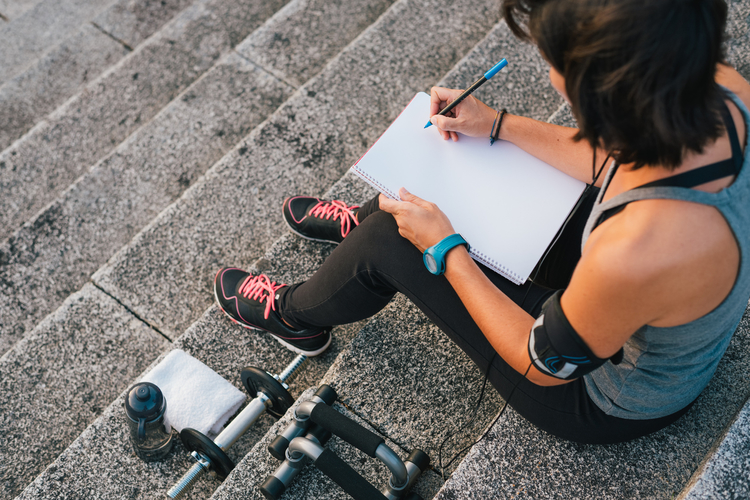Best Ways to Track Your Progress at the Gym and at Home
If you’re getting back into your regular workout routine at home or at the gym (please be safe, the pandemic is still raging), you don’t have to dive in without a game plan in terms of how best to track progress and monitor your results.
Why? If you don’t have direction, it’ll be hard to stay accountable and to keep the momentum high, and you won’t be able to tailor a workout routine that’s best suitable for your needs in order to maximize your time and energy.
Luckily, there are a few ways to track your physical results and emotional symptoms throughout your workout process. These tips work for weight loss or mass gain.
Consistency is key, so whichever method(s) you choose, make sure you stick with them to get accurate information to help you adapt or change course, if needed. Check it out!

Keep a Journal
Keep a fitness journal that can track your weight (pounds lost or gain), BMI or muscle mass if you have access to figure it out. You can also track how your clothes fit (loose? tight?), how many reps or sets of certain exercises you accomplish or plan on accomplishing, as well as tracking your speed and distance (depending on the workouts). It’s also a good idea to jot down how you’re feeling post-workout, just so you can see if you require a day off for recovery or not. After all, we all work out at our own pace.
By tracking these variables you can see where you may need to go up in weights or cut back in intensity. Your workouts should leave you feeling happy and accomplished, so make sure to take the time you need. If you need an extra recovery day, take it! Just remember to get back on the horse.
Use a Smart Watch
Pen and paper aren’t for everyone, but they can be helpful as a symbolic way to physically track your progress. But if you prefer to log your fitness journey on a smart watch instead, that works too! You can get an Apple Watch or Garmin or another type of brand that has smart technology to monitor all your stats as well as give some pointers on what you may need to improve on.
Make sure to log yourself if it doesn’t automatically track for you, as you want to keep the consistency aspect in there and see how you’re doing during each workout and how active you are in general in the week too.

Use an App for Trainer Tips
If you are using a fitness app or taking classes online or through a virtual system, you can likely get pointers from the trainers on how better to utilize form or to maximize your results. They’ll give tips on what you may need to work on or where you shine. It’s also nice to have another person to hold you accountable. And if you have access to a trainer in real life, they’ll be able to help you achieve the maximum results with your time.
If you have the budget, paying for a few sessions would be great to speed things up and get more of an educational aspect so you can perform better when working out solo.
Take Gym Selfies
You might see people at the gym or after workouts snapping photos of their jacked, sweaty physique and think “get a room with yourself.” Put the kibosh on that talk, there’s a good chance that’s part of that person’s fitness best practices. Photos show a lot so take selfies when you’re leaving the gym (or before if you want to look less sweaty!) to track your progress over the weeks. Be sure to snap images from multiple angles so you can track your progress from your head-on view, profile view and even your back (a handy 3 second timer should do the trick). These photos side-by-side can help you see what you look like, as sometimes we can’t quite see ourselves the way we should when we look in the mirror.



